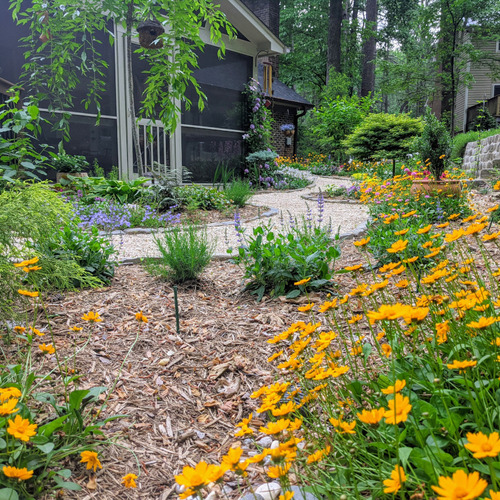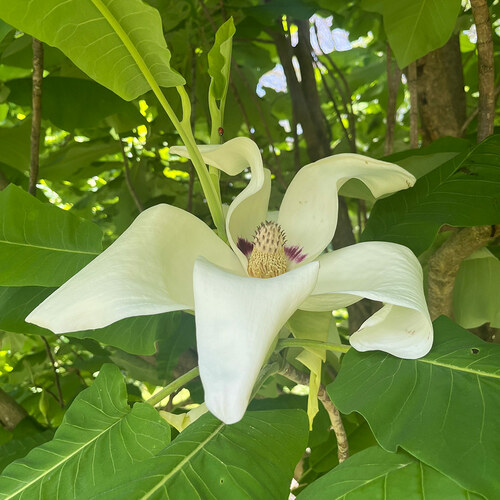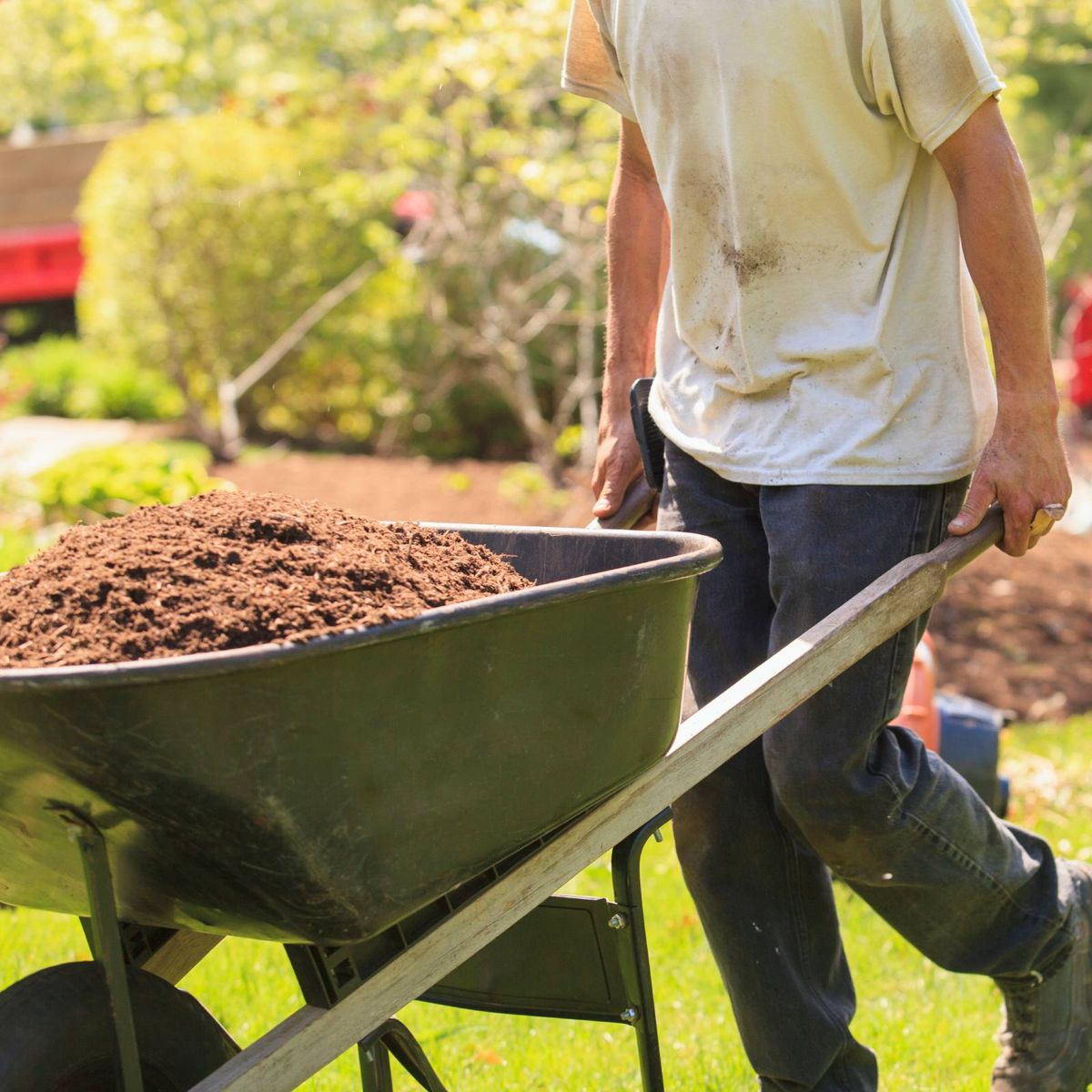Hi, I’m Kristi and I live in Raleigh, North Carolina. When we moved into our house 10 years ago, the backyard was heavily wooded. We loved it at first, but over time we realized that wooded does not necessarily mean low-maintenance. Eventually, we wanted some sunlight and to be able to go outside without the ground being muddy. We also had a deck that was starting to rot and a roof with moss and algae growing on it. So over the years we had several large trees removed that were close to the house and had a screened-in porch built. That’s when I caught the gardening bug. A lot of people want their decks and patios to feel like an extension of their home, but I wanted ours to feel like it was plopped down in the middle of a cottage garden. So I got to work. I started with creating the pathway and over the last three years have learned a thing or two about the importance of plant placement and choosing the right plant for the space. I rely mostly on perennials for this partial-shade garden (multiple phlox varieties, coreopsis, foxgloves, coneflowers, hardy geraniums, and hydrangeas, to name a few), but I also pop in different annuals each year. Over the past two years I’ve been working on two woodland garden areas. Both are pretty heavily shaded, so I use lots of hostas, ferns, oakleaf hydrangeas, and understory trees such as dogwoods, red Japanese maples, and redbuds. Although they aren’t necessarily the “stars” of the gardens, I’ve also made a point to add in lots of native trees, shrubs, and perennials. Every year I make new (and old) mistakes, but it’s been fun learning as I go. I’ve also enjoyed connecting with other gardeners online through Instagram (@thescreenporch.garden).
 Both these plants—a blue Phlox divaricata (Zones 3–8) and a yellow coreopsis (Coreopsis auriculata, Zones 4–9)—are North American natives that bring a lot of color to the garden.
Both these plants—a blue Phlox divaricata (Zones 3–8) and a yellow coreopsis (Coreopsis auriculata, Zones 4–9)—are North American natives that bring a lot of color to the garden.
 The yellow coreopsis blooms are a repeated theme in the garden.
The yellow coreopsis blooms are a repeated theme in the garden.
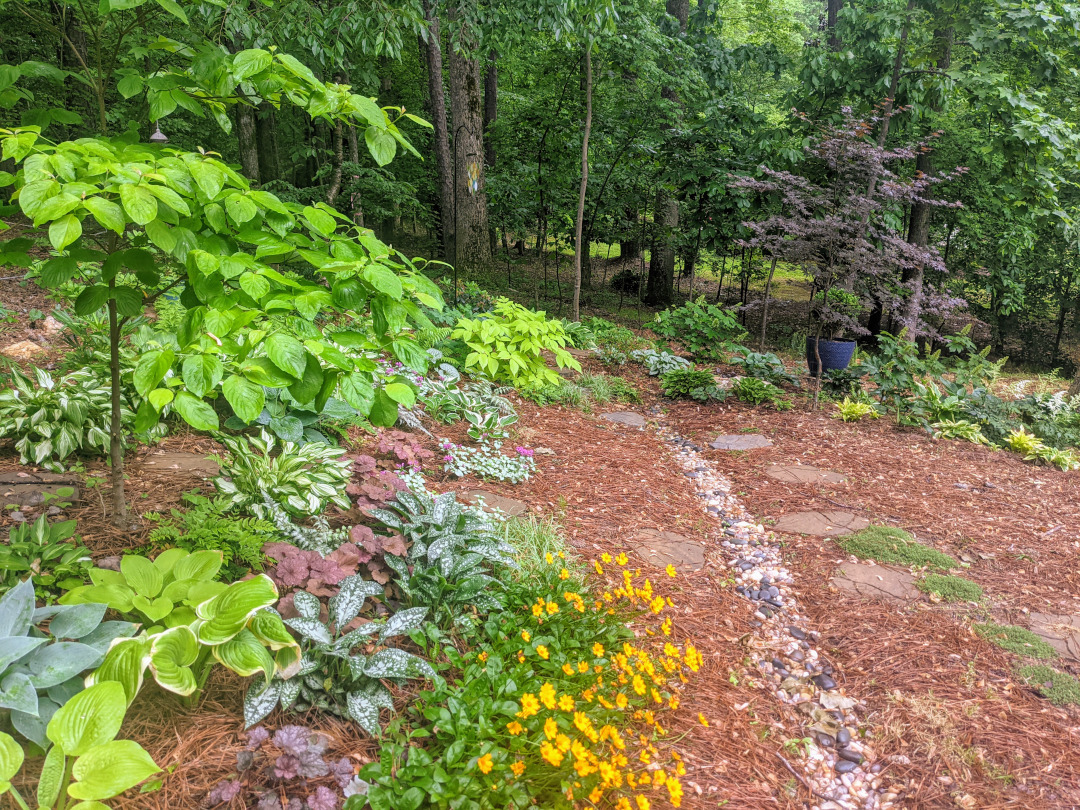 As the garden moves into more shade, the flowers are replaced by the foliage of hostas (Hosta hybrids, Zones 4–9), heuchera (Heuchera hybrids, Zones 4–9), and pulmonaria (Pulmonaria hybrids, Zones 3–9).
As the garden moves into more shade, the flowers are replaced by the foliage of hostas (Hosta hybrids, Zones 4–9), heuchera (Heuchera hybrids, Zones 4–9), and pulmonaria (Pulmonaria hybrids, Zones 3–9).
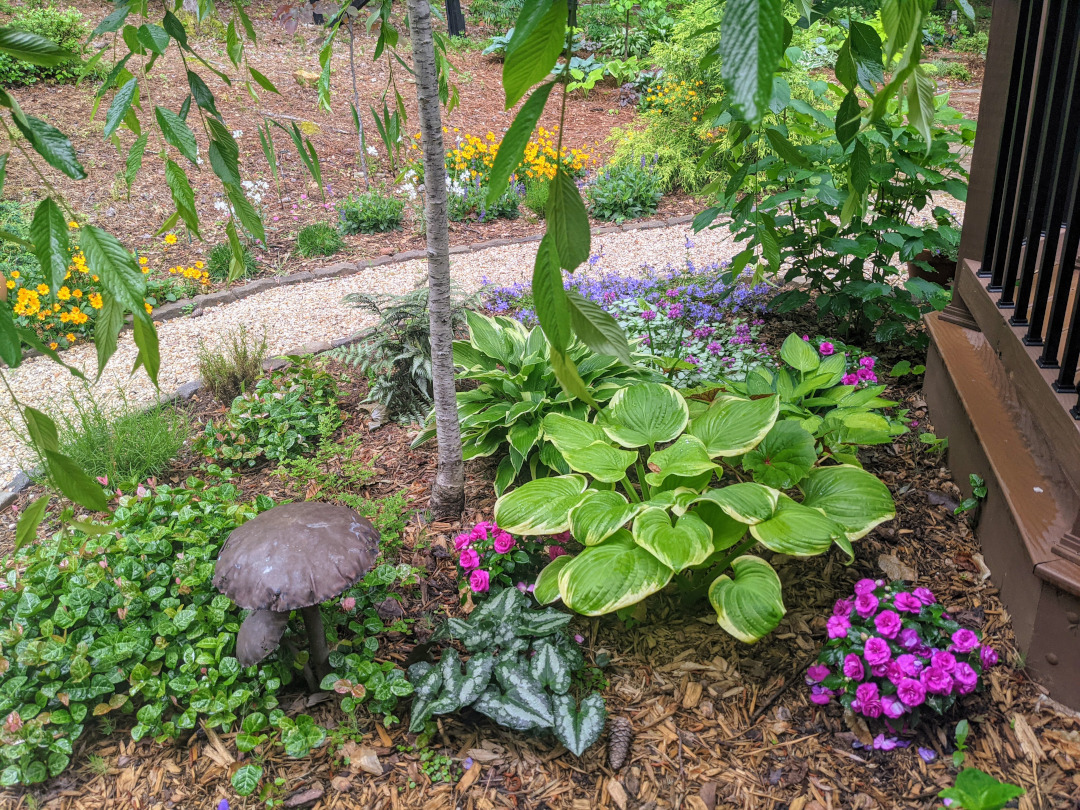 Impatiens (Impatiens walleriana, Zones 10–11 or as annuals) bring pops of color into the shade.
Impatiens (Impatiens walleriana, Zones 10–11 or as annuals) bring pops of color into the shade.
 Just foliage alone can make for a wonderful planting, with a wide range of colors and textures.
Just foliage alone can make for a wonderful planting, with a wide range of colors and textures.
 A crisp gravel walk leads you through the informal cottage garden–style plantings.
A crisp gravel walk leads you through the informal cottage garden–style plantings.
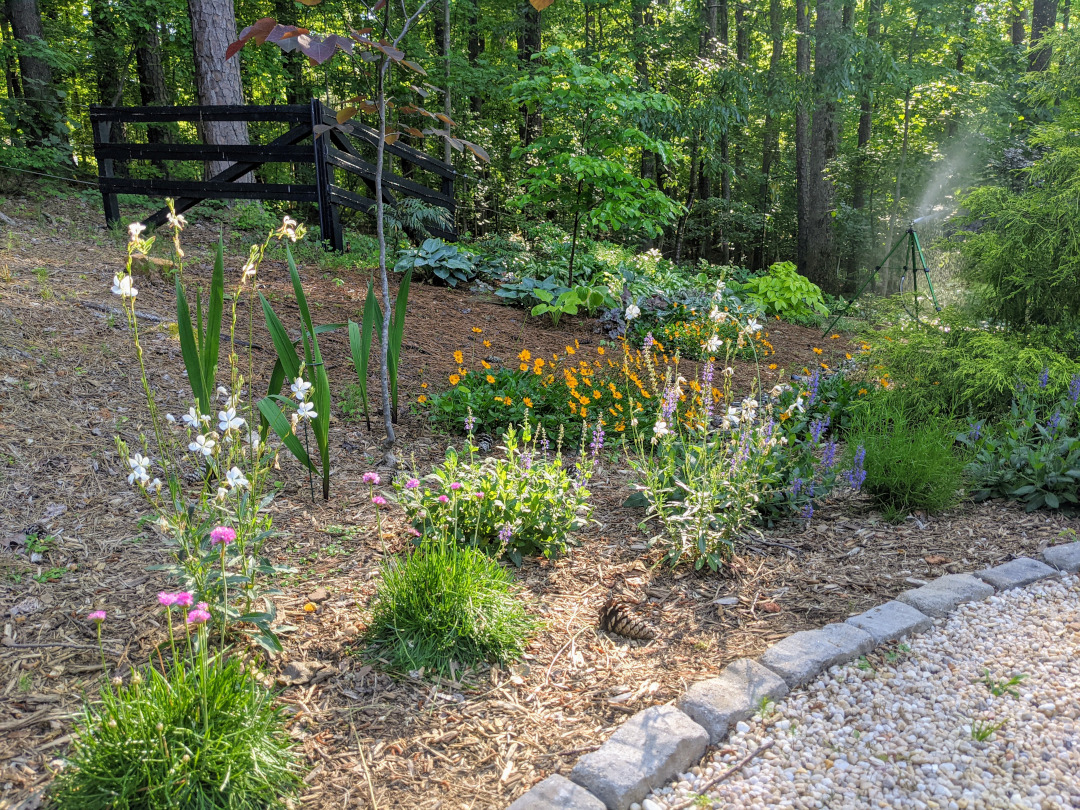 The more-cultivated perennial beds are backed up by the beautiful woodlands behind.
The more-cultivated perennial beds are backed up by the beautiful woodlands behind.
Have a garden you’d like to share?
Have photos to share? We’d love to see your garden, a particular collection of plants you love, or a wonderful garden you had the chance to visit!
To submit, send 5-10 photos to [email protected] along with some information about the plants in the pictures and where you took the photos. We’d love to hear where you are located, how long you’ve been gardening, successes you are proud of, failures you learned from, hopes for the future, favorite plants, or funny stories from your garden.
Have a mobile phone? Tag your photos on Facebook, Instagram or Twitter with #FineGardening!
Do you receive the GPOD by email yet? Sign up here.

